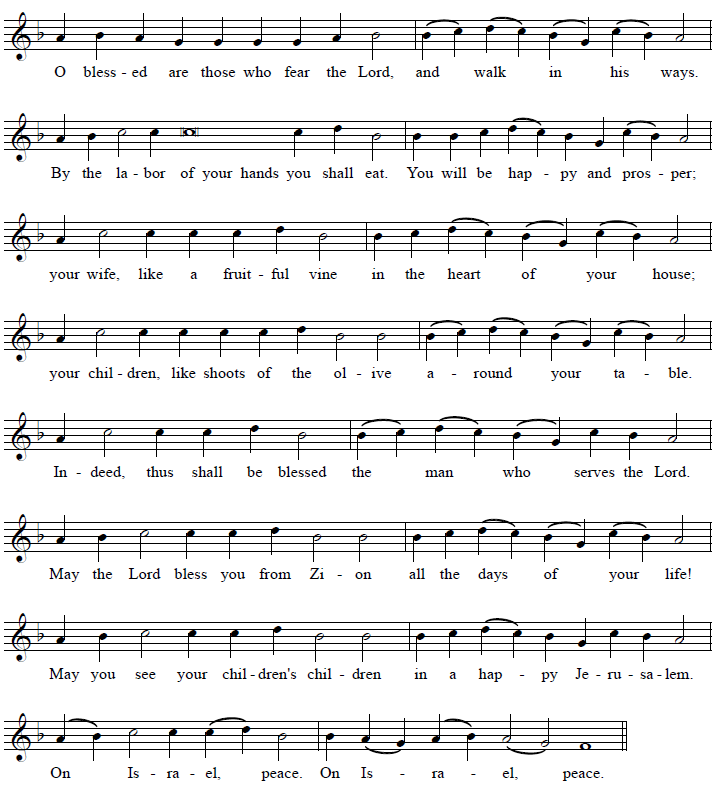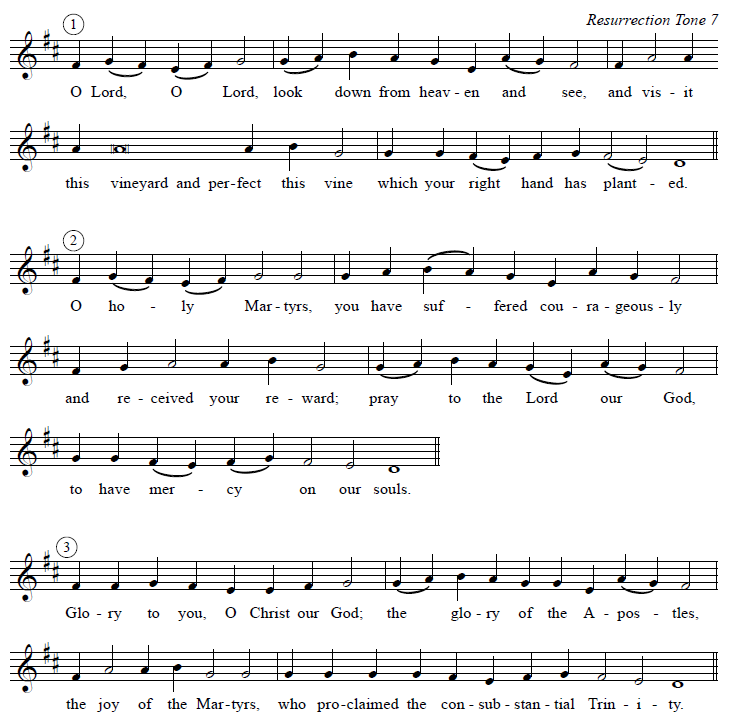Singing the Crowning Service
This article covers the practical aspects of singing the Crowning (wedding) service in the Byzantine Catholic Church, when the Divine Liturgy is not celebrated. For theological background, see The Mystery of Crowning.
You will need a copy of the wedding service as used in your parish, and this leaflet with propers for Crowning.
The betrothal
If the couple has not already been betrothed, then the formal betrothal is celebrated in the narthex before the crowning. Although this service is very simply, and may even be celebrated somewhat privately, a cantor should be present since some of the responses are sung. See Singing the Betrothal Service.
The crowning service
The crowning service itself begins when the priest and deacon lead the couple to be married from the narthex into the nave of the church, while Psalm 127 is sung by the cantor and people.
This psalm should NOT be sung to a simple psalm tone; traditionally, the Tone 7 troparion melody is used, though other melodies could also be chosen. Here is the setting used in the MCI leaflet:

Astute readers may notice that this translation does not exactly match the one on the Euchologion page. In fact, since several different translations of the Crowning service and its hymns are in circulation, this is to be expected. You should sing whatever text is in front of your congregation, adapting the music to the text as best you can.
The psalm is followed by an exchange of consent, and then the priest gives the opening blessing: "Blessed is the kingdom...." This blessing is used for the Divine Liturgies, and for the Holy Mysteries which are most intimately connected with the building up of the kingdom, namely Baptism/Chrismation and Crowning. The "Amen" is immediately followed by the Litany of Peace, with additional petitions for the crowning; use the ordinary melodies for the litany responses.
Next there are three prayers, each of which is introduced with "Let us pray to the Lord." As we mentioned in the article on Singing the Betrothal Service, it is important that every cantor be prepared to sing

whenever the deacon or priest intones, "Let us pray to the Lord." As usual, after the priest's prayer, lead the congregation in singing:
Then the priest joins the hands of the couple, they may exchange vows if that is the local custom, and they are crowned by the priest. During this part of the service, there are no responses by the congregation and cantor.
Readings follow the crowning itself. The deacon or priest intones, "Wisdom!", and the cantor and congregation sing the prokeimenon of crowning:

And noted above with the processional psalm, there are several translations of this prokeimenon in circulation; use the one that is in front of the congregation, adapting the chant accordingly.
After the reading from Saint Paul's Letter to the Ephesians, the Alleluia is sung:

and the deacon reads the story of the wedding at Cana from the Gospel according to Saint John.
After the Gospel, there are two litanies: a Litany of Fervent Supplication, with an additional petition for the newly-married couple, and the Angel of Peace Litany, with a prayer in between (introduced with "Let us pray to the Lord."). Use the ordinary melodies for these litanies, including the one for a special intention at the Litany of Fervent Supplication. The Angel of Peace litany concludes with the Our Father; use any melody known to the congregation. For a gathering of Byzantine Catholics from several parishes, either the Lord's Prayer in Tone 5 samohlasen or the one to the Tone 4 podoben are usually best.
After the Litanies, the priest leads the newly-married couple in procession around the tetrapod while four hymns are sung by the congregation: one for protection, one to the apostles, one to the martyrs, and one in praise of the Mother of God. As noted already, there are several translations and sets of music in circulation; here are the current MCI versions.


Notice that the three troparia use the same melody as the processional psalm: namely, the Tone 7 troparion melody.
The couple's crowns are removed, and if both are Catholic and have not already received Holy Communion, they may receive the Eucharist together. There are no responses by the congregation for this part of the service except
There is no Communion Hymn.
After single prayer by the priest and a prayer over bowed heads (both with the usual introductions and responses), the priest blesses a cup of wine and gives it to the couple to drink, representing the common life they will share.
This is followed by a dismissal, again with the usual responses. See Singing the Betrothal Service for the two different ways to sing the "Glory... now and ever... Give the blessing."
The priest will ordinarily intone Many Years, and the cantor should be prepared to lead the singing here once more.




